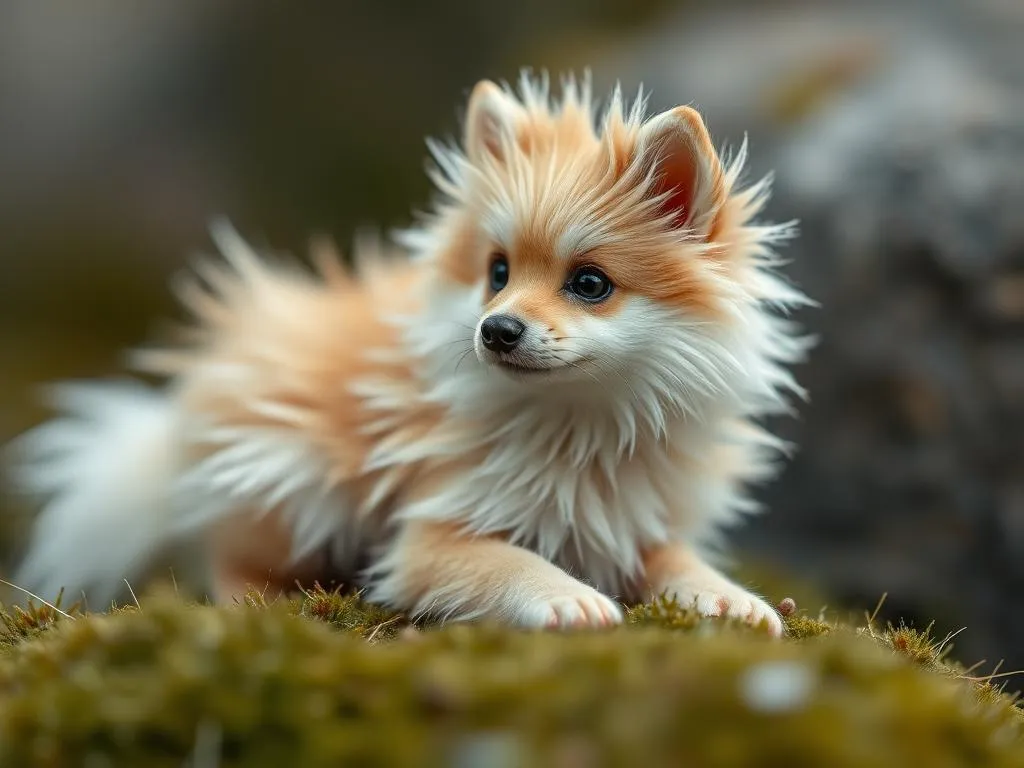
The world of dog breeds is vast and diverse, each breed carrying its own unique charm and characteristics. Among the many breeds that have captured the hearts of dog lovers, the Miniature Spitz stands out as a delightful companion. This breed is known for its fluffy coat, lively personality, and affectionate nature, making it a popular choice for many families and individuals alike.
Understanding Dog Breeds
Definition of Dog Breeds
A dog breed is a group of dogs with specific characteristics, such as appearance, behavior, and temperament, that distinguish them from other breeds. These traits often stem from the breed’s history, purpose, and genetic makeup. Understanding the significance of breed characteristics is essential for potential dog owners, as it helps them choose a breed that aligns with their lifestyle and preferences.
Overview of Popular Dog Breeds
While there are countless dog breeds, some have gained more popularity than others. Breeds like the Labrador Retriever, Golden Retriever, and French Bulldog are well-loved for their friendly dispositions. The Miniature Spitz, although less commonly recognized, offers a similar charm in a compact size. Its playful nature and loyalty make it a wonderful addition to any household.
The Miniature Spitz: An Overview
History of the Miniature Spitz
The Miniature Spitz is a smaller variant of the larger Spitz breeds, which have a rich history dating back to ancient times. Originating in Northern Europe, these dogs were bred for various purposes, including herding, guarding, and companionship. The Miniature Spitz was developed as a companion dog, prized for its affectionate nature and lively spirit. Over the years, it has become a beloved breed in many households around the world.
Physical Characteristics
The Miniature Spitz is a small yet robust dog, typically weighing between 10 to 20 pounds and standing about 12 to 15 inches tall at the shoulder. One of its most striking features is its thick double coat, which can come in various colors, including black, white, orange, and cream. The breed is also known for its erect triangular ears, bushy tail that curls over its back, and expressive eyes that convey intelligence and curiosity.
Temperament and Behavior
In terms of temperament, the Miniature Spitz is known for being friendly, alert, and playful. These dogs are highly social and thrive on interaction with their families. They often exhibit a lively personality and can be quite vocal, making them excellent watchdogs. However, socialization from a young age is crucial to ensure they develop into well-rounded pets.
Care and Maintenance
Grooming Needs
The Miniature Spitz requires regular grooming to maintain its beautiful coat. It is recommended to brush their fur at least two to three times a week to prevent matting and reduce shedding. During shedding seasons, daily brushing may be necessary. Essential grooming tools include a slicker brush and a comb. Bathing should be done every few months or as needed, using a gentle dog shampoo to keep their coat healthy.
Dietary Requirements
A balanced diet is crucial for the well-being of a Miniature Spitz. High-quality dog food, whether dry kibble or wet food, should be rich in protein and essential nutrients. It’s important to consult with a veterinarian to determine the best diet for your dog’s age, weight, and activity level. Additionally, be mindful of common dietary restrictions, such as allergies to certain ingredients.
Exercise and Activity Level
Despite being small, the Miniature Spitz is an active breed that requires regular exercise. Daily walks, playtime in the yard, or interactive indoor games are essential to keep them physically and mentally stimulated. Engaging in activities that challenge their intelligence, such as puzzle toys and obedience training, can also help prevent boredom and destructive behaviors.
Health Considerations
Common Health Issues
Like many dog breeds, the Miniature Spitz is prone to certain health issues. Some common concerns include:
- Dental Problems: Due to their small size, they may be susceptible to dental diseases.
- Patellar Luxation: This condition affects the kneecap and can lead to mobility issues.
- Hip Dysplasia: A genetic condition that affects the hip joint.
- Eye Issues: Such as cataracts or progressive retinal atrophy.
It is vital for owners to be aware of these potential health problems and to monitor their pets for any signs or symptoms.
Regular Veterinary Care
Routine veterinary check-ups are essential for maintaining the health of a Miniature Spitz. Regular exams help in early detection of health issues and ensure that vaccinations are up to date. A typical vaccination schedule includes core vaccines, as well as any additional shots recommended by the veterinarian based on the dog’s lifestyle and environment.
Lifespan and Aging
The average lifespan of a Miniature Spitz is around 12 to 15 years. To ensure a healthy aging process, it’s important to provide a balanced diet, regular exercise, and routine veterinary care. As the dog ages, adjustments to their diet and activity levels may be necessary to accommodate their changing needs.
Training and Socialization
Basic Training Techniques
Training a Miniature Spitz can be a rewarding experience, as they are intelligent and eager to please. Positive reinforcement techniques, such as treats and praise, work well with this breed. Consistency is key; commands should be taught using the same words and techniques to avoid confusing the dog. Short training sessions are more effective, as they maintain the dog’s interest and focus.
Socialization Practices
Early socialization is crucial for a Miniature Spitz. Exposing them to different people, environments, and other animals helps them develop into well-adjusted dogs. Puppy classes, dog parks, and playdates with other pets can provide valuable experiences. The more positive interactions they have, the more confident and well-behaved they will become.
Living with a Miniature Spitz
Ideal Living Environment
The Miniature Spitz is adaptable and can thrive in various living conditions, including apartments and houses. However, they do require sufficient space to move around and play. A safe, enclosed yard is ideal, but regular walks and outings can compensate for a lack of outdoor space. This breed is also sensitive to extreme temperatures, so considerations for climate control are essential.
Family Compatibility
The Miniature Spitz is known for its friendly nature and generally gets along well with children and other pets. However, supervision is important, especially with young children, to ensure safe interactions. Their playful demeanor makes them an excellent companion for active families, but potential owners should consider the energy levels and activity needs of both the dog and family members.
Adoption and Purchasing
Finding a Miniature Spitz
For those interested in adding a Miniature Spitz to their family, it’s essential to find a reputable source. Consider adopting from rescue organizations or shelters that specialize in breed rescues. If purchasing from a breeder, ensure they are responsible, ethical, and prioritize the health and well-being of their dogs. Visiting the breeding facility and meeting the puppies’ parents can provide insight into the dog’s temperament and health.
Cost of Ownership
The cost of owning a Miniature Spitz includes both initial and ongoing expenses. Initial costs may range from $500 to $3,000, depending on whether you adopt or buy from a breeder. Ongoing expenses, such as food, grooming, and veterinary care, can also add up. It’s important to budget for these costs to ensure you can provide a happy and healthy life for your new furry companion.
Conclusion
The Miniature Spitz is a captivating breed that brings joy and companionship to many households. With its charming personality, striking appearance, and loving nature, it’s no wonder this breed has gained popularity among dog lovers. For potential dog owners seeking a loyal and playful companion, the Miniature Spitz is certainly worth considering. Their adaptability to various living situations and compatibility with families make them an ideal choice for dog enthusiasts.
FAQs
Are Miniature Spitz good for first-time dog owners?
Yes, the Miniature Spitz can be a suitable choice for first-time dog owners due to its friendly nature and trainability. However, consistent training and socialization are essential.
How much exercise does a Miniature Spitz need?
A Miniature Spitz requires at least 30 minutes of exercise daily, including walks and playtime, to stay happy and healthy.
What is the best diet for a Miniature Spitz?
A high-quality diet rich in protein and essential nutrients is ideal for a Miniature Spitz. Consult a veterinarian for specific dietary recommendations based on your dog’s needs.
How do I train a Miniature Spitz to follow commands?
Using positive reinforcement techniques, such as treats and praise, is effective for training a Miniature Spitz. Consistency and patience are key to successful training.
What are the common misconceptions about Miniature Spitz?
Common misconceptions include that they are overly yappy or difficult to train. With proper training and socialization, the Miniature Spitz can be a well-mannered and quiet companion.









